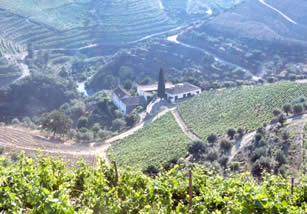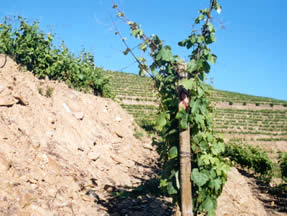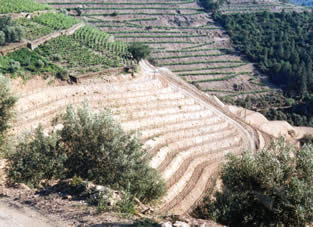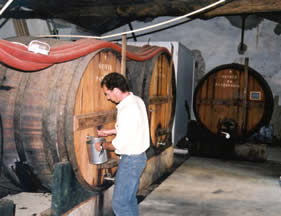
|
The
Douro wine revolution Quinta do Passadouro Soc Agrícola Lda., Vale de Mendiz,
5070 Alíjo, Portugal
Next stop was Quinta do Passadouro, a stunning estate looking
all the better in the late afternoon sunshine. Passadouro was acquired
by Dirk Niepoort in 1991, in partnership with financial backer Dieter
Bohrmann.
After a while, it is time to decide the destiny of each vat.
The very best will end up as vintage port; the slightly less
impressive (but still very good) vats are destined to be LBV, and will spend longer in wood.
Jorge gave me four barrel samples of 2001 to taste (two Passadouro,
two Niepoort), to see what I thought. This has been a tricky vintage
in the Douro, and is certainly in the shadow of the superb 2000 vintage.
Fortunately, I picked out the one stand-out (no. 4) that is probably destined to be
Vintage Port. Phew. Sample 1 Passadouro Very rich, liquoricey sweet herby nose.
Palate is very rich and sweet with a lovely focused spiciness and some
tannin. Quite forward. Very good/excellent Sample 2 Passadouro The nose is much spicier: quite taut and
savoury. Sweet caramel and herb notes dominate the palate, which is
rounded, rich and quite sweet. Very good+ Sample 3 Niepoort Lively
sweet herby nose with a distinctive caramel edge. The palate is quite
rounded and rich with some tannin. Very good+ Sample 4 Niepoort Lovely
liquoricey nose with some spice and herbal notes. The palate shows
good density and concentration together with some tannic structure.
Wonderful stuff with lots of complexity. Excellent |



